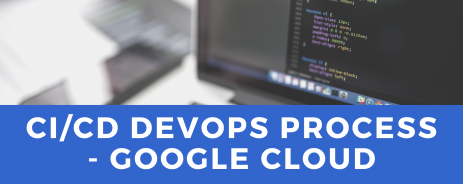
Unlocking Business Potential With Predictive AI
Artificial intelligence (AI) may have a great deal of hype, but its disruptive potential isn’t hyperbole.
According to a recent report from McKinsey, AI adoption jumped markedly to 72% in 2024, up from 50% the previous year. Across industries, organizations are using generative AI to address a growing range of business functions.
If your organization isn’t part of that movement, you might assume that the technology isn’t quite there. But for manufacturers, current-generation AI can profoundly impact business forecasting and operational efficiency. Predictive AI can be transformational — with the right approach.

Why Predictive AI Matters in Modern Manufacturing
In simple terms, AI provides transparency and actionable insights along the supply chain. By analyzing vast amounts of data, the technology can predict changes in demand, suggest process improvements, and highlight risks.
Of course, not all AI solutions are equal. To be useful, insights must be trustworthy, and human oversight is a necessary part of the equation. But with proper planning and implementation, predictive AI can leverage your historical data to automate processes and guide decision-making.
So, what does that look like in practice?
- Improved Forecasting: Predictive AI can model non-linear relationships in data — in other words, it’s more capable of handling large or complex datasets. That means more scalability and better modeling for nontraditional businesses.
- Operational Efficiency: Tools can automate certain repetitive tasks, though the exact use cases will vary depending on the business. With appropriate oversight, an AI model might be able to create invoices, forward orders to appropriate departments, and handle other paperwork. This is called robotic process automation (RPA), and as we’ll discuss in a moment, it requires precise implementation for optimal results.
- Risk Management: With sufficient data, AI could reveal potential risks before they impact the business. For example, predictive models could anticipate drops in demand or identify machines that will need service, eliminating unscheduled downtime.
- Streamlined Communication: For manufacturers with multiple facilities, predictive AI can evaluate data (particularly from IoT devices) to transform individual factories and shipping centers into a fully connected ecosystem.
These are not theoretical benefits; at Blue Stingray, we’ve helped manufacturers realize the power of AI, and we’ve seen predictive tools in action. However, proper implementation is key.
Predictive AI in Manufacturing: What Works?
 Predictive AI isn’t something that you “add in” on a whim. This is where many manufacturers are making key mistakes: They misuse AI tools to create lackluster analytics, then assume that the tool is broken or incapable of addressing their business needs — when in reality, the tool would be effective with more data, better data, or a little bit of fine-tuning.
Predictive AI isn’t something that you “add in” on a whim. This is where many manufacturers are making key mistakes: They misuse AI tools to create lackluster analytics, then assume that the tool is broken or incapable of addressing their business needs — when in reality, the tool would be effective with more data, better data, or a little bit of fine-tuning.
If you want to leverage the power of AI, here’s what you need to consider:
Are your current systems AI-ready?
Your existing infrastructure should be somewhat modern. If a legacy system cannot communicate effectively with other technologies, AI tools won’t have access to the data from those systems (and often, legacy systems store the most useful data).
The good news is that many older systems can be connected to current-generation systems. When businesses need a full upgrade, data can be imported into Odoo, Adobe Commerce, and similar platforms; transitioning to a modern system can yield enormous benefits, even without predictive AI. Learn more: Technical Debt Is a Growing Problem: Here’s How Leaders Can Help.
Is your data ready for predictive analytics?
Generally speaking, more data will yield better results (provided that your AI tool is optimized for its use case).
Data availability is therefore important — particularly if you plan on using realtime data for predictions. Cloud-based systems offer the flexibility and scalability that you’ll need for data collection and analysis; legacy data storage solutions (such as onsite servers) are less capable of working with predictive models.
Transitioning to cloud-based solutions can significantly enhance the effectiveness of predictive AI in your operations. This might mean migrating to entirely new systems, but as we’ve discussed, data migration can be enormously beneficial (and you don’t need to sacrifice security or control over your data as part of that process).
What are your goals for predictive AI implementation?
 “We want to use AI because we’ve heard that it’s helpful” is a bad approach. A strategic approach is essential.
“We want to use AI because we’ve heard that it’s helpful” is a bad approach. A strategic approach is essential.
Start by identifying key areas where predictive AI can add value. Determine which predictive models are aligned with your business goals and be prepared to continuously monitor and refine those models.
If you need to predict demand for a seasonal business, you might need an entirely different AI strategy than an established manufacturer that’s opening a new factory. Your data partner can be helpful here: They can identify use cases that make sense for your business and industry, then analyze your current systems to build a project that will deliver a reasonable ROI.
Building an AI Strategy with Blue Stingray
Predictive AI is not just another technological trend; it’s a powerful tool that can unlock unprecedented potential. For CEOs looking to drive efficiency, improve forecasting, and stay competitive, investing in predictive AI makes sense — as long as you approach the technology as a tool, not a magic wand.
To get the most from predictive models, you may need to upgrade certain systems, refine processes, or migrate to modern platforms. But those improvements are necessary regardless of your business objectives: The future of manufacturing is data-driven, and predictive AI is your key to staying ahead.
Ready to explore how predictive AI can transform your business? Blue Stingray can help you assess your current systems and take the first steps. Reach out to our team of experts today to learn how predictive models can transform the way your organization operates.



